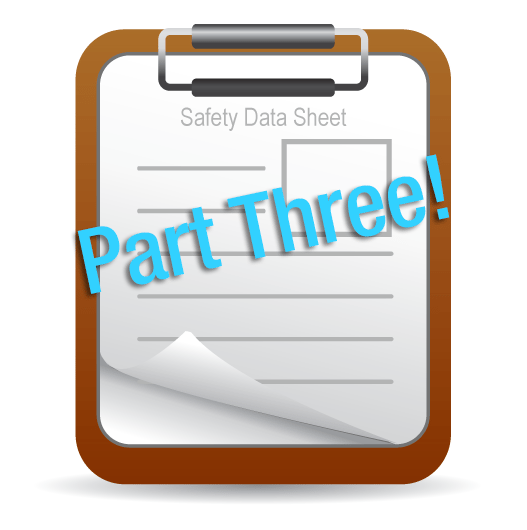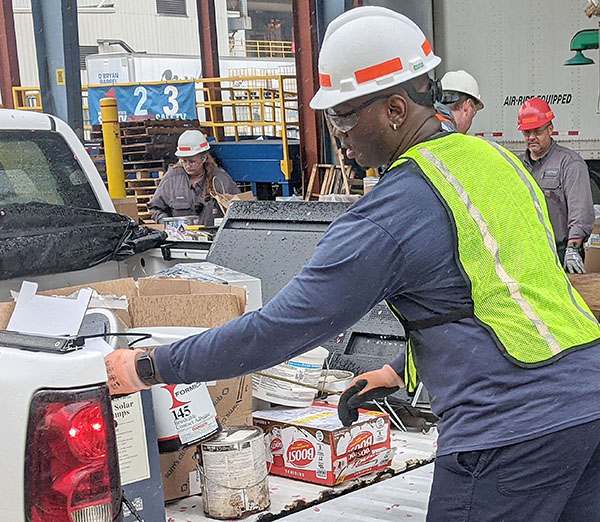
Today we will round out our series on the new regulations surrounding the OSHA Safety Data Sheet. If you missed the previous posts, “OSHA Safety Data Sheets: New Section Regulations” or “OSHA Safety Data Sheets: New Section Regulations, Part 2” you may want to read them first. If you’ve read those already though read on to learn about the last five sections.
12. Ecological Information
Section twelve marks the beginning of the non-mandatory portion of the Safety Data Sheet and deals with ecological information. In this section you will find information to evaluate the environmental impact if the chemical or chemicals in question were released into the environment. According to OSHA, this section could include:
- “Data from toxicity tests performed on aquatic and/or terrestrial organisms, where available (e.g., acute or chronic aquatic toxicity data for fish, algae, crustaceans, and other plants; toxicity data on birds, bees, plants).
- Whether there is a potential for the chemical to persist and degrade in the environment either through biodegradation or other processes, such as oxidation or hydrolysis.
- Results of tests of bioaccumulation potential, making reference to the octanol-water partition coefficient (Kow) and the bioconcentration factor (BCF), where available.
- The potential for a substance to move from the soil to the groundwater (indicate results from adsorption studies or leaching studies).
- Other adverse effects (e.g., environmental fate, ozone layer depletion potential, photochemical ozone creation potential, endocrine disrupting potential, and/or global warming potential).”
13. Disposal Considerations
This section (which is also non-mandatory) details suggested disposal practices, ways to recycle the chemical(s) or container, and safe handling practices. This section should also refer readers to Section 8 to minimize exposure. Potential information for this section includes:
- A description of appropriate containers for disposal.
- Suggestions of appropriate disposal methods.
- A description of the physical and chemical properties that may affect disposal activities.
- Language discouraging sewage disposal.
- Any special precautions for landfills or incineration activities.
14. Transport Information
Section 14, which again is non-mandatory, provides guidance on classification information for shipping and transporting of hazardous chemical(s) by road, air, rail, or sea. The information in this section might include:
- UN number (i.e., four-figure identification number of the substance).
- UN proper shipping name.
- Transport hazard class(es).
- Packing group number, if applicable, based on the degree of hazard.
- Environmental hazards (e.g., identify if it is a marine pollutant according to the International Maritime Dangerous Goods Code (IMDG Code)).
- Guidance on transport in bulk (according to Annex II of MARPOL 73/78 and the International Code for the Construction and Equipment of Ships Carrying Dangerous Chemicals in Bulk (International Bulk Chemical Code (IBC Code)).
- Any special precautions which an employee should be aware of or needs to comply with, in connection with transport or conveyance either within or outside their premises (indicate when information is not available).
15. Regulatory Information
The final non-mandatory section, 15 identifies the safety, health, and environmental regulations specific for the product that is not indicated anywhere else on the SDS. This information could include any national and/or regional regulatory information of the chemical or mixtures (including any OSHA, Department of Transportation, Environmental Protection Agency, or Consumer Product Safety Commission regulations).
16.Other Information
The final section indicates when the SDS was prepared or when the last known revision was made.The SDS may also state where the changes have been made to the previous version.
Hopefully you found this series of posts helpful! If so (and if you would like to see us write an eBook about this subject in the future) please let us know in the comments section! Additionally, for complete information you can visit the OSHA website here.
More News From Heritage
-
6/27/24
Heritage Environmental Services to Acquire EBV from General Dynamics
Heritage Environmental Servicess, an EQT Infrastructure portfolio company, will acquire EBV from General Dynamics
-
6/13/24
Meet The Facilities – East Liverpool
An inside look at our incineration facility located in East Liverpool, OH
-
5/24/24
Habitat for Humanity 2024
Heritage hosted our 14th annual Habitat for Humanity build this month, partnering with over 50 employees from various THG companies.
-
5/6/24
Date set for the household hazardous waste collection in East Liverpool, Ohio
-
3/12/24
Equal Pay Day – Spotlighting Our Female Drivers
-
3/8/24
International Women’s Week Spotlight – Shannon Dippel
For International Women's Week, we're spotlighting some of the incredible women in the Heritage family. Our final spotlight is Shannon Dippel.
-
3/8/24
International Women’s Week Spotlight – Susan Adams
For International Women's Week, we're spotlighting some of the incredible women in the Heritage family. Our sixth spotlight is Susan Adams.
-
3/7/24
International Women’s Week Spotlight – Lea Wilson
For International Women's Week, we're spotlighting some of the incredible women in the Heritage family. Our fifth spotlight is Lea Wilson








